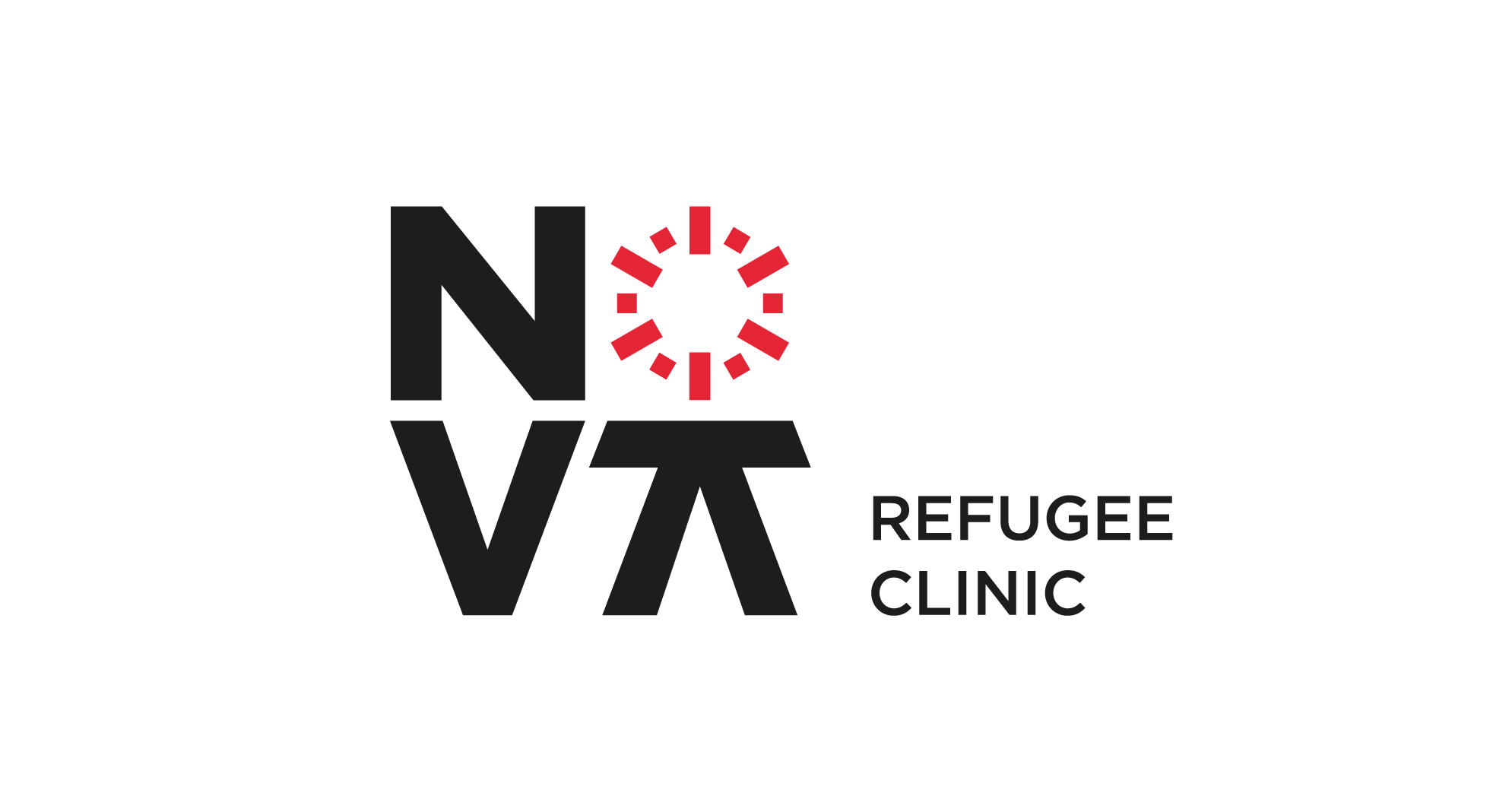Addressing the interplay between International Humanitarian Law and Refugee Law
Madalena Dória, Inês Tralhão and Dimitra Fragkou[1]
The impact of armed conflict on an individual is detrimental. People flee war for various reasons. Due to destruction of their property, loss of family and friends, due to danger for expressing their political opinion supporting the belligerents, due to trauma by either witnessing or experiencing war atrocities, for fear of being raped, tortured, or arbitrarily arrested, for being victims of war crimes or for avoiding enlistment in the army in order to avoid committing war crimes.
The legal discipline which is applied by default when it comes to war is International Humanitarian Law (IHL). IHL is referred to as the law of armed conflict or the law of war (jus in bello). Its primary purpose is to restrict the means and methods of warfare that parties to a conflict may employ, as well as ensure the protection and humane treatment of persons who are not, or no longer are, taking a direct part in the hostilities.[1] Regarding Treaty Law, IHL is one of the most densely codified branches of international law, its major norms having been codified in the four Geneva Conventions from 1949 and its Additional Protocols from 1977, related to the protection of the victims of armed conflicts.
IHL distinguishes between international and non-international armed conflict. International armed conflicts (IACs) are those in which at least two States are involved. Non-international armed conflicts (NIACs) are those restricted to the territory of a single State, involving either regular armed forces fighting groups of armed dissidents or armed groups fighting each other.[2] For an armed confrontation to be considered as a non-international armed conflict a certain threshold of harm should be reached; a “minimum level of intensity” which is not met only by minor clashes or by capturing a single fighter. Simultaneously, IHL regulates who is a ‘combatant’, namely a member of the national or rebel armed forces, or a ‘civilian’, namely whoever does not fall under the category of combatants. Use of force is generally legal under IHL: army clashes, bombardment of military targets, capturing enemy combatants as hostages, even the loss of civilian life can be justified under certain circumstances as collateral damage.
In the Refugee Context, IHL can be relevant for the understanding of terminology, such as violence and armed conflict, combatants and non-combatants, members of armed forces or rebel groups, or war crimes. And though refugee law, when assessing a person’s fear for persecution due to nationality, race, religion, political opinion or as a member of a particular social group, understands this terminology differently and independently, occasionally these two fields of law coincide, and issues of interpretation arise.
Though the mere fact of fleeing armed conflict and violence does not per se suffice for refugee status according to a narrow interpretation of the Refugee Convention, UNHCR pinpoints that ‘the 1951 definition of a refugee makes no distinction between refugees fleeing peacetime or wartime persecution’.[3] Moreover, it is a fact that the majority of armed conflict and violence situations is closely connected to political, religious, ethnic, social or gender persecution[4] armed conflict may be a significant factor for a person to qualify for international protection. UNHCR, aiming to provide an interpretation closer to the scope and the purpose of Refugee Convention, has adopted, several Guidelines related to armed conflict and refugee law such as the Guidelines for International Protection No. 10 [Claims to Refugee Status related to Military Service], No. 11[Prima facie recognition of Refugee Status], No.12 on [Claims for Refugee Status Relating to Situations of Armed Conflict and Violence] and No. 5 [Application of the Exclusion Clauses: Article 1F].
In these guidelines, UNHCR clarifies that the IHL ‘categorization is not required for the purpose of refugee status determination,’[5] since IHL categorization does not include all forms of violence, even if their consequences are just as violent or harmful as IACs or NIACs (such as e.g., gang or criminal violence). Decision makers make use of different terms to describe situations of armed conflict or violence, such as generalized or indiscriminate violence.
The first requirement for the qualification of refugee status is the existence of a ‘well-founded fear for persecution’.[6] This persecution in armed conflict situations may amount to serious violations of IHL, inter alia war crimes, such as genocide (e.g., Yezidis of Iraq), ethnic cleansing, torture and other forms of inhuman or degrading treatment, rape and other forms of sexual and gender-based violence, forced recruitment, child recruitment, arbitrary arrest and detention, hostage taking and enforced disappearances; however, Refugee Law does not require by an applicant to prove that IHL violations have taken place for the decision maker to establish fear for persecution. Nonetheless, what is mandatory for a person to qualify as a refugee according to the Refugee Convention is the existence of a nexus to race, ethnicity, religion, political opinion, or membership to a particular social group.
Consequently, the mere placement of a part of the territory under siege does not suffice to establish per se a fear of persecution for a national of that state. When the nexus to refugee definition is not established, the international community examines (in national and regional level) the levels of generalized or indiscriminate violence and the risks of harm arising thereof for providing people fleeing war with complementary protection statuses.
The Common European Asylum System, for example, in Art. 15 (c) of the Qualification Directive, grants subsidiary protection to those who do not qualify as refugees but face a real risk for suffering serious harm, when there is ‘[…] a serious and individual threat to a civilian’s life or person by reason of indiscriminate violence in situations of international or internal armed conflict’.[7]
The Convention of 1969 of the Organization of African Unity adopts the refugee definition of the UN Refugee Convention in Art I(1), but adds in paragraph 2 that the same protection is also granted to: ‘every person, who, owing to external aggression, occupation, foreign domination or events seriously disturbing public order in either part or the whole of his country of origin or nationality, is compelled to leave his place of habitual residence in order to seek refuge in another place outside his country of origin or nationality’.[8] OAU Convention takes a step forward from the notion of persecution of the Refugee Convention. Its spirit is protection-oriented and aims to find durable solutions, understanding the complexity of mechanisms which leads people to displacement, which may not necessarily relate to clashes between state or non-state actors, but even to the loss of control and a subsequent serious disruption of the public order.
In the meantime, Central and Latin American countries have adopted a document which represents a humanitarian response to the realities faced by people who flee situations of conflict, or equivalent which threaten life, security, or freedom. As such, according to the so-called Cartagena Declaration (1984) refugees may also be: ‘persons who have fled their country because their lives, security or freedom, have been threatened by generalized violence, foreign aggression, internal conflicts, massive violation of human rights or other circumstances which have seriously disrupted public order.’[9]
‘Generalized violence’ in the Cartagena Declaration is not limited to situations falling under the scope of the IHL armed conflict definition. It is rather applied on an individual basis and either the intensity or the geographic expansion of violence or a combination of both constitute definitive elements.
When war leads to the massive displacement of entire groups of people under circumstances which indicate that members of the group could be considered individually as refugees, then it is often extremely urgent that these people are provided with assistance. Then there is not enough time for individual assessment of refugee status. In this case, refugee law provides for prima facie (in the absence of evidence to the contrary) recognition of the entire group as refugees.[10] An indicative example of such persecution is genocide, namely the extinction of a national, ethnical, racial, or religious group, whose definitive elements match exactly some of the nexuses of refugee definition (except for political opinion or belonging to a particular social group).
Sometimes, people who have participated in battle or were supposed to participate in battle, as combatants, defect or deny service and seek refuge to another state. Refugee law does not by default deny refugee status to them due to their former combatant or civilian status.[11] However, there is a distinct treatment among individuals performing alternative service, conscientious objectors, deserters, or draft evaders. In the meantime, the justification of one’s flight is related to them being forcibly recruited, adhering to a duty of performing military service or being on call as reservists. For the clarification of these terms, refugee law turns again to IHL. In some of these cases, the participation in armed conflict can also raise the exclusion clause (Art. 1F of Refugee Convention). That is, to restrict from refugee status, those who qualify initially as refugees, but have committed either crimes against peace, war crimes, or crimes against humanity – as defined in the relevant international instruments (including IHL) -, serious non-political crimes outside the country of refuge prior to his/her admission to that country as a refugee, and been guilty of acts contrary to the purposes and principles of the United Nations (e.g., terrorism). This clause depicts the condemnation of criminals and their preclusion of finding sanctuary and refuge in other states to avoid punishment.[12]
[1] Melzer, Nils; International Humanitarian Law – A Comprehensive Introduction; ICRC; November 2019; p.17
[2] What is International Humanitarian Law? Advisory Service on International Humanitarian Law, ICRC, p.1
[3] UNHCR Guidelines 12, p. 3.
[4] UNHCR Guidelines no. 12, p. 1.
[5] UNHCR Guidelines no.12, p. 2.
[6] UN General Assembly, Convention Relating to the Status of Refugees, 28 July 1951, United Nations, Treaty Series, vol. 189, p. 137, art. 1A (2).
[7] European Union: Council of the European Union, Directive 2011/95/EU of the European Parliament and of the Council of 13 December 2011 on standards for the qualification of third-country nationals or stateless persons as beneficiaries of international protection, for a uniform status for refugees or for persons eligible for subsidiary protection, and for the content of the protection granted (recast), 20 December 2011, OJ L. 337/9-337/26; 20.12.2011, 2011/95/EU.
[8] OAU Convention Governing the Specific Aspects of Refugee Problems in Africa (10 September 1969), 1001 UNTS 45.
[9] Cartagena Declaration on Refugees, Colloquium on the International Protection of Refugees in Central America, Mexico and Panama (22 November 1984).
[10] UNHCR Handbook, para. 44; Guidelines on International Protection No. 11.
[11] See e.g. Guidelines on International Protection No.10.
[12] For more information see UNHCR Guidelines on International Protection 5.
[1] Madalena Dória is a Master’s student in International and European Law at NOVA School of Law. She received a Law degree from the Faculty of Law of the University of Lisbon and a postgraduate degree in International Humanitarian Law and Human Rights in Conflict Situations.
Inês Tralhão is an undergraduate bachelor student at NOVA School of Law, pursuing a specialization in International Humanitarian Law and Human Rights in Armed Conflicts from the European Institute of the University of Lisbon. She takes part in CEDIS as a Project Assistant for Intra-Africa Pax Lusófona and CALESA.
Dimitra Fragkou is a PhD Candidate in NOVA School of Law. She was a lawyer in emergency settings and a caseworker in the European Asylum Support Office (EASO). She holds an LLM in Public International Law by Democritus University of Thrace. Her current research focuses on torture victims and is funded by the FCT.




